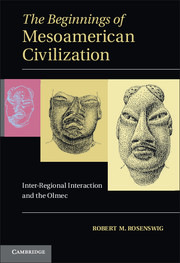Book contents
- Frontmatter
- Contents
- Figures
- Tables
- Acknowledgments
- SECTION I AN EARLY FORMATIVE MESOAMERICAN PROBLEM
- SECTION II ARCHAEOLOGICAL DATA
- 4 Settlement Patterns and Architecture
- 5 Diet, Food Processing and Feasting
- 6 Representation and Aesthetics
- 7 Inter-regional Exchange Patterns
- SECTION III DERIVING MEANING FROM THE ARCHAEOLOGICAL RECORD
- 9 Conclusion
- Appendix 1 Temporally secure excavation contexts at Cuauhtémoc with detailed ceramic data
- Appendix 2 Temporally secure excavation contexts at Cuauhtémoc without detailed ceramic data
- References Cited
- Index
5 - Diet, Food Processing and Feasting
Published online by Cambridge University Press: 26 February 2010
- Frontmatter
- Contents
- Figures
- Tables
- Acknowledgments
- SECTION I AN EARLY FORMATIVE MESOAMERICAN PROBLEM
- SECTION II ARCHAEOLOGICAL DATA
- 4 Settlement Patterns and Architecture
- 5 Diet, Food Processing and Feasting
- 6 Representation and Aesthetics
- 7 Inter-regional Exchange Patterns
- SECTION III DERIVING MEANING FROM THE ARCHAEOLOGICAL RECORD
- 9 Conclusion
- Appendix 1 Temporally secure excavation contexts at Cuauhtémoc with detailed ceramic data
- Appendix 2 Temporally secure excavation contexts at Cuauhtémoc without detailed ceramic data
- References Cited
- Index
Summary
It is not the unity of living and active humanity with the natural, inorganic conditions of their metabolic exchange with nature…which requires explanation…but rather the separation between these inorganic conditions of human existence and this active existence…
Marx 1973 [1857–1858]: 489Using the well-known architectural analogy, it is the economic basethat supports society's political and ideological superstructure. Defined in these terms, the economic base combines the means of production (based on the fertility of land, technology for extracting and producing food, as well as systems for its redistribution) with social (particularly property) relations to form the mode of production. Among small-scale societies, the majority of economic activity consists of people nourishing themselves and supplying the other basics to sustain life. In such societies, satisfying the need for food limits a number of demographic factors. For example, the environment (given a constant level of technology) sets limits on the number of people that can be sustained in a particular location and, therefore, the size of social groups and concentration of people. Therefore, foragers would not live in cities of millions of people nor would they develop state apparatus to manage such concentrations of population. The means of production (which subsumes environmental factors) also set limits on the ideological realm of society. For example, it would be impossible for vegetarian dietary taboos to develop in the Arctic where animal products are the only food available.
- Type
- Chapter
- Information
- The Beginnings of Mesoamerican CivilizationInter-Regional Interaction and the Olmec, pp. 132 - 174Publisher: Cambridge University PressPrint publication year: 2009



